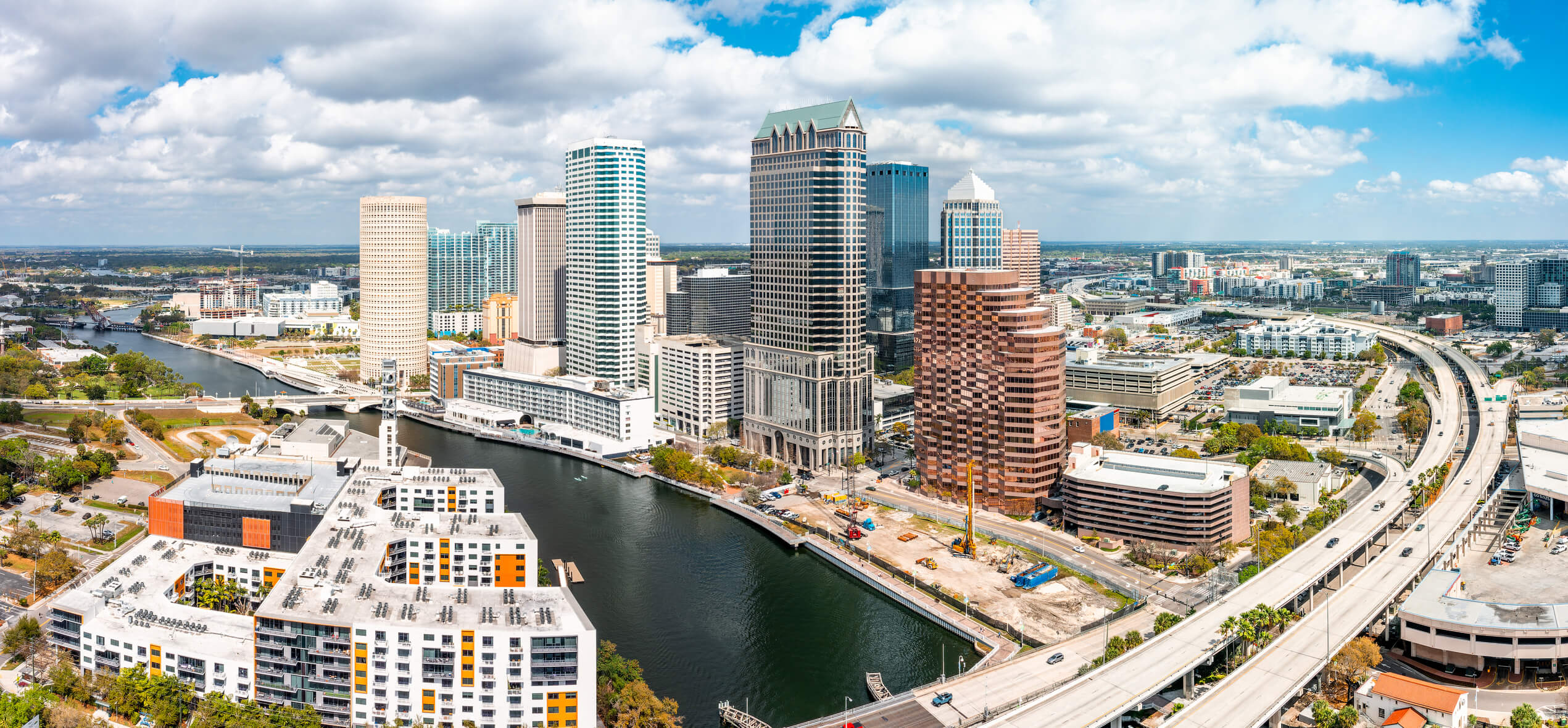
Tampa is notorious for its traffic and congestion, but savvy locals are always finding creative ways to bypass backups and reach their destinations on time. So, why does Florida's third-largest city struggle with such persistent traffic issues? Some reports point to the influx of tourists. Visitors unfamiliar with Tampa's roadways often slow things down as they navigate tricky interchanges or construction zones. Surprisingly, even the rise of remote work hasn’t significantly alleviated the gridlock.
Whether you're a longtime resident or just visiting, there's no denying that sitting in bumper-to-bumper traffic can ruin your day. To help you steer clear of frustration, let’s explore some of Tampa’s most congested highways—spots you may want to avoid, especially during rush hour.
I-275
The Tampa area is served by five major highways, but I-275 often stands out as the most congested. Running directly through the heart of Tampa and its downtown, this critical artery is essential for transporting people and goods across the region. Spanning 60 miles in Florida, I-275 includes two iconic crossings over Tampa Bay: the Sunshine Skyway Bridge and the Howard Frankland Bridge. Despite a posted speed limit of 65 miles per hour, frequent traffic bottlenecks can turn commutes into a frustrating slog.
Efforts are underway to ease congestion along I-275. The Howard Frankland Bridge, which connects Hillsborough and Pinellas counties, is undergoing a significant upgrade. The new bridge will feature eight lanes—four general-use and four express lanes—and a dedicated pathway for cyclists and pedestrians. Additionally, express lanes are being added to the Pinellas Corridor, while key ramps and infrastructure enhancements are being implemented at the high-traffic I-275 and I-4 interchange. These projects aim to improve traffic flow, making travel within Tampa smoother and more efficient.
Hillsborough Ave (Highway 41)
Hillsborough Avenue is one of Tampa's primary east-west thoroughfares, connecting with several major highways, including the Veterans Expressway, I-275, and I-4. These interchanges, however, are notorious for heavy traffic congestion. The avenue provides access to key landmarks such as Tampa International Airport, the Hillsborough River, and the Seminole Hard Rock Hotel and Casino.
Stretching from the Hillsborough/Pinellas county line to unincorporated areas of Hillsborough County, Hillsborough Avenue passes through the heart of Tampa, where it crosses the Hillsborough River. The central section of the avenue is especially known as a traffic hotspot. Local residents recommend checking traffic reports before traveling this route to avoid delays.
Selmon Expressway
The Lee Roy Selmon Expressway, also known as FL 618, is a vital transportation artery in Tampa, Florida. Stretching across South Tampa, this toll expressway provides convenient access to key locations such as the University of Tampa and downtown Tampa. However, these high-traffic areas often contribute to congestion as drivers navigate entry and exit points along the route.
Formerly called the Crosstown Expressway—a fitting name that reflected its cross-city path—the roadway was renamed in 1999 to honor Lee Roy Selmon, a Hall of Fame football star for the Tampa Bay Buccaneers. Spanning 14 miles, the expressway was constructed in segments throughout the 1970s and 1980s, evolving over the decades to meet the city’s growing transportation needs.
A major upgrade occurred in 2010 when the expressway transitioned to an all-electronic tolling system, eliminating cash toll booths and reducing traffic bottlenecks at toll plazas. Despite this improvement, rush hour remains a challenging time for commuters, with notable delays during peak travel periods.
The Lee Roy Selmon Expressway serves as a critical link to essential destinations, including the MacDill Air Force Base in South Tampa and the thriving commuter town of Brandon. While it plays a key role in Tampa’s transit infrastructure, managing traffic flow remains a constant balancing act on this heavily-used roadway.
Bayshore Boulevard
Bayshore Boulevard, a picturesque waterfront road along South Tampa’s Hillsborough Bay, is a favorite destination for pedestrians, thanks to its stunning promenade. Located just south of downtown Tampa, it features a 4.5-mile-long, 10-foot-wide sidewalk—the second-longest continuous sidewalk in the United States, surpassed only by one in Galveston, Texas.
While pedestrians relish the charm of this scenic boulevard, drivers often have a different experience. Historically, a trolley service once ran along the roadway’s median, ferrying passengers until it ceased operation in the 1940s. Today, the two-lane divided road is known for its scenic appeal, which may contribute to its frequent congestion.
Over the years, many Tampa residents have advocated for expanding the roadway or adding more lanes to alleviate traffic. However, the city has been cautious, prioritizing the preservation of the pedestrian-friendly waterfront over infrastructure changes. As a result, Bayshore Boulevard remains heavily congested during peak hours, particularly on weekends and during morning and evening rush hours.
Whether this iconic boulevard will eventually undergo a transformation to address traffic woes remains uncertain. For now, its beauty and charm come with the trade-off of inevitable congestion, making it a place better suited for a leisurely stroll than a quick drive.
Kennedy Blvd (Highway 60)
John F. Kennedy Boulevard, one of Tampa's primary east-west thoroughfares, has a rich history marked by several name changes. The section running through downtown Tampa was once called Lafayette Street, while the portion west of downtown was known as Grand Central Avenue. Following JFK's assassination in 1963, the road was renamed in his honor. Notably, just four days before his tragic death in Dallas, President Kennedy’s motorcade traveled down this very route.
Despite its changing names, the road has always held the designation of State Route 60. Today, Kennedy Boulevard stretches from Memorial Highway to Channelside Drive, serving as a vital artery in Tampa's transportation network. It offers convenient access to key destinations, including Tampa International Airport, WestShore Plaza, International Plaza, the University of Tampa, the Port of Tampa, and the downtown area.
Its central location and connectivity make Kennedy Boulevard an indispensable route for navigating Tampa. However, these advantages also contribute to frequent congestion. To make the most of this essential roadway, it’s wise to check traffic updates and plan your travel for less busy times.
Posted by Mike + Michelle Grizzell on

Leave A Comment